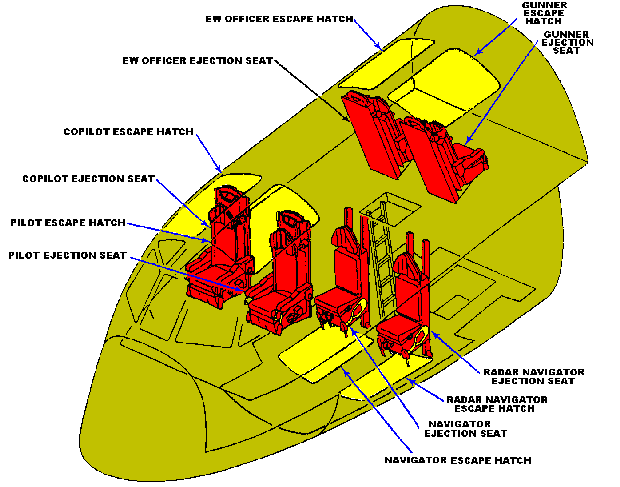It’s as if the devil is playing with it, but even now when I ‘just’ pulled ‘an-nice-looking-book’ off the bookshelf somewhere, it again appears to be …..is another great book. Maybe you think I am having shares of this publisher, but that’s not the fact I can assure you!
This book is about the development of escape methods from aircraft and other flying ‘stuff’. If you open the book for the first turn, the first thing you’ll notice is the smell. Yes, this is a book with a fragrance! The fragrance is from the smooth paper in combination with the used printing ink. This combination of paper, ink and the content that is reflected by all those letters and pictures may smell! It has become a great combination of 14 chapters with lots of black and white photographs.
The book starts with the first developments that led to what later became known as the parachute. Now for us it is the most natural thing in the world but in Cordoba in the year 852 it was not quite obvious. In that year Mr. Amen Firman was very lucky with only minor injuries when his attempt to fly was not really successful. He tried to fly from a tower using his mantle with wooden sticks. His coat broke his fall and in that sense it worked as a parachute. Only about 930 (!) years later, in the year 1785 – the Frenchman Blanchard threw an animal with a parachute from a balloon and from that time the developments went relatively quick.
year 852 it was not quite obvious. In that year Mr. Amen Firman was very lucky with only minor injuries when his attempt to fly was not really successful. He tried to fly from a tower using his mantle with wooden sticks. His coat broke his fall and in that sense it worked as a parachute. Only about 930 (!) years later, in the year 1785 – the Frenchman Blanchard threw an animal with a parachute from a balloon and from that time the developments went relatively quick.
The book recounts in a fascinated way, using quotations from observations and personal experiences of soldiers and crews who had to escape to save their lives. Those stories are so fascinating and sometimes almost incredible that you really sit up to read! And that goes on for the whole book.
The 1st World War was important for the development of the first parachutes because people jumped on a larger scale and with the aim to save their lives! People jumped from burning or observation balloons, zeppelins and double deckers in distress. Before that time parachuting was more like public entertainment. The parachutes opened automatically with something like what we now call a static line.
After the First World War people started experiments with jumping out of airplanes. In the U.S., in particular General Mitchel was one of the people who made about 1500 jumps in total. At that time a huge number. In 1922 Mr. Harris was the first whose life was saved when he himself opened his parachute ‘by hand’ at 500 feet above Ohio after his plane refused to fly. He landed in the backyard of Troy Street, number 337. …if you walk by…”.
In the run up to World War 2 developments in the world went fast and the war itself was of course a wonderful testing ground. The stories left and right in the book are chilling. There are stories of pilots and their crew, flying Spitfires, Ilyushins, Messersmitts and Lancasters who sometimes could barely able to detach from their burning cabin. Often they had burns and other injuries and were therefore still abroad when the bullets whistled them to the ears. Some had to jump from an altitude of 22,000 feet and that caused unconsciousness, freezing phenomena or simply an immediate death.
From 1945 there were experiments with ‘bang seats’. The Heinkel aircraft ejection seats were the first used and worked with compressed air. This resulted in an acceleration of 27G. From that moment, the first pilots were saved by these chairs. In 1955 a pilot was forced to jump from an F-100 Super Sabre at just under 7000 feet when the aircraft fell down from a height of 35000 feet with a speed of 1.3 times the speed of sound. I will not tire you with details of how the pilot survived, but he survived! I don’t like to bail out of an aircraft with 80kts!
 And so the book continues with the different phases of the cold war, the war in Vietnam, the modern era and the major developing and escapes from aircraft including the Canberra, the Vulcan, the B52, F104, F16 etc. And not to forget the stunning storie of a German soldier whose parachute did not open when he jumped from 500 feet … and about a B52 who accidentally was shot with a rocket ….
And so the book continues with the different phases of the cold war, the war in Vietnam, the modern era and the major developing and escapes from aircraft including the Canberra, the Vulcan, the B52, F104, F16 etc. And not to forget the stunning storie of a German soldier whose parachute did not open when he jumped from 500 feet … and about a B52 who accidentally was shot with a rocket ….
None dull history book with all facts in a row. Jackson has succeeded in an extremely interesting and readable book in which facts of history are deleverd interspersed with exciting, adventurous stories and details from first hand. The English is also easily accessible in this book.
See also this website: www.martin-baker.com.











Leave a Reply